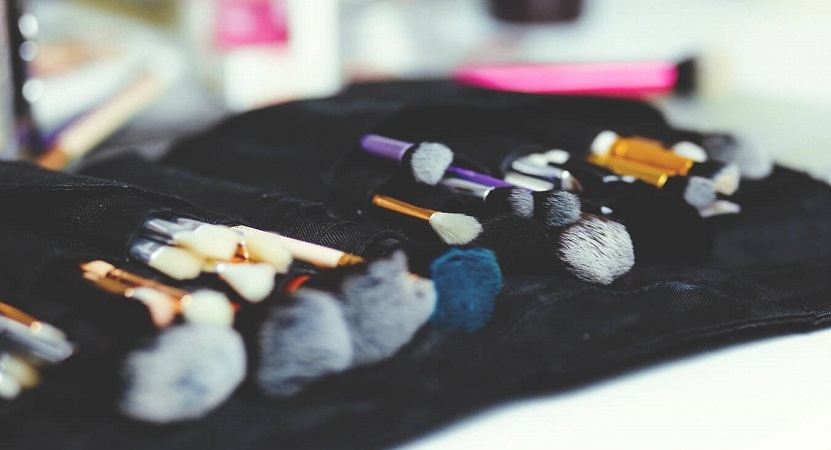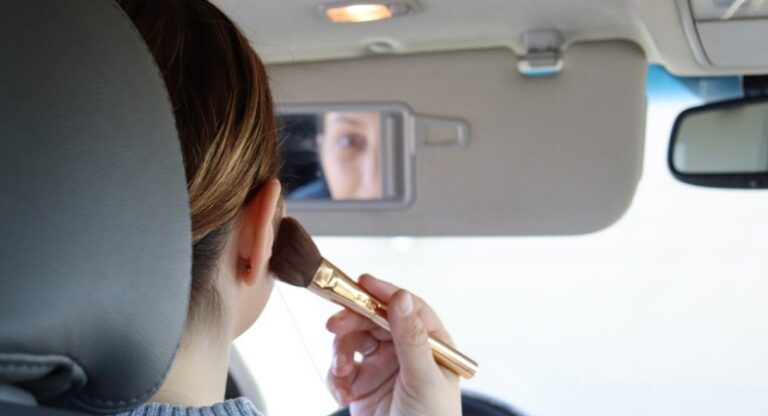What if we told you that cleaning your makeup brushes is more important than cleaning your toothbrush? There’s no shame in being unfamiliar with this daunting task; makeup brushes rarely come with care instructions and it’s one of the less discussed beauty routines. Time’s are a changing; here’s everything you need to know about how to clean makeup brushes.
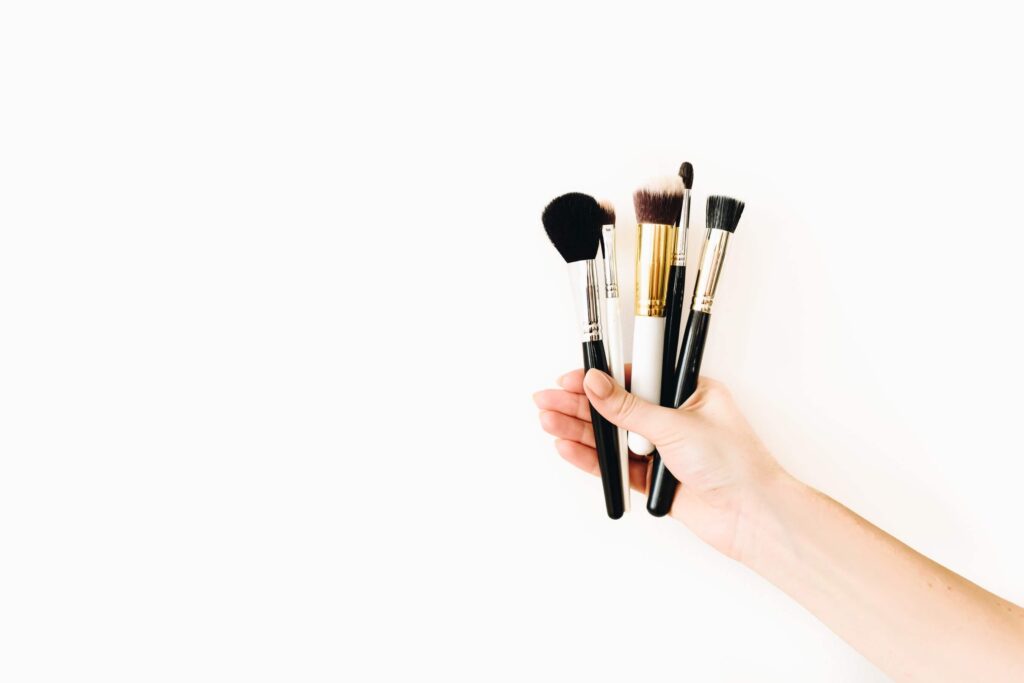
In this article we discuss the following:
- Why Clean Makeup Brushes?
- How to Clean Makeup Brushes
- What to Use to Clean Makeup Brushes
- Makeup Brushes and Conditioner: All You Need to Know
- How Often to Wash Makeup Brushes
- How to Dry Makeup Brushes Fast
- How to Clean Foundation Brush
- How to Clean Eyeshadow Brushes
- How to Clean Makeup Sponges and Beauty Blenders
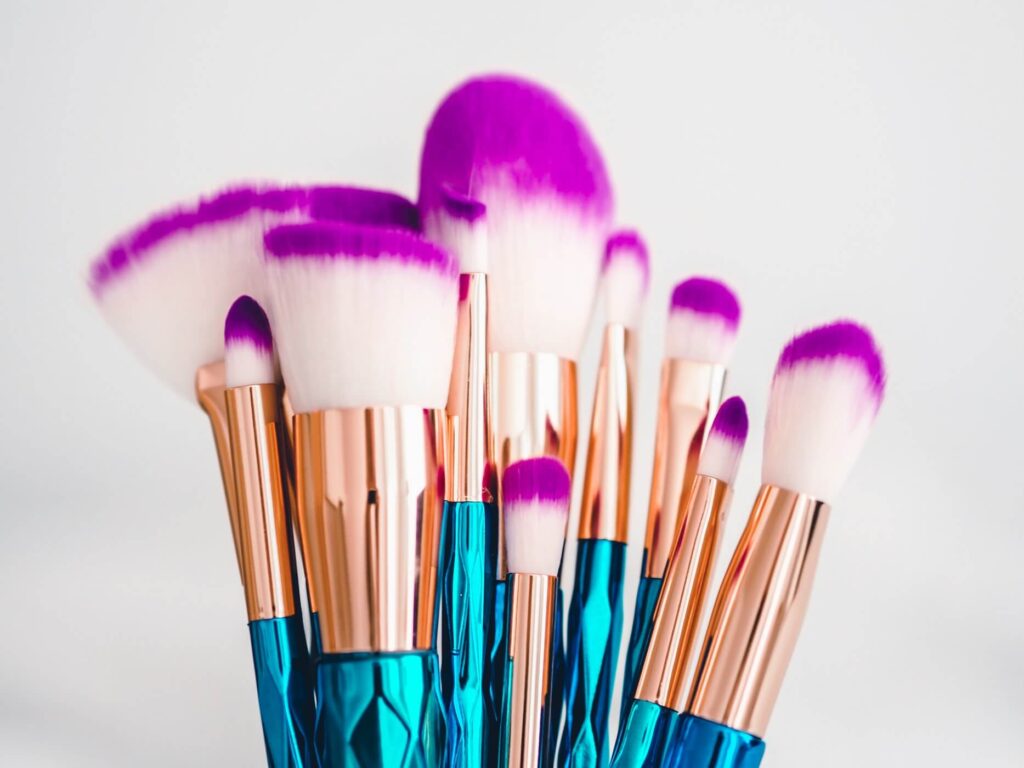
Why Clean Makeup Brushes?
Before we tell you how to clean a makeup brush, it’s necessary to discuss why it is that we clean them in the first place. Make up brushes give as much as they get. What we mean by this is that although their primary purpose is to transfer and distribute product, the brushes end up gathering certain entities along the way and “inviting” them to take up refuge in the bristles.
What this does is turn makeup brushes into breeding grounds for bacteria. Even touching your face after it’s just been washed will cause some sort of bacterial spread. There is bacteria on your hands, towels and clothing at all times; this is the way of the natural world.
As you use a makeup brush to spread beauty products over your skin, the brush itself is collecting whatever bacteria comes up along the way. This bacteria will continue to survive in the brush hairs, until the next time it is used against your skin. Some of the now thriving bacteria will then transfer back onto your face, which can be very threatening to your overall skin condition.
Bacteria aside, makeup brushes are abrasive tools and will also collect dead skin cells and oils from your face and hold them in their bristles until the next time of use. These entities are known to clog pores and induce breakouts, even in typically healthy skin. If you’ve ever wondered why people who battle acne use a fresh face towel every night — this is the reason!
How to Clean Makeup Brushes
How to wash makeup brushes properly depends on a few very simple techniques involving an array of household items.
Thankfully, the type and make of your makeup brush doesn’t really matter when it comes to cleaning them. Makeup brushes are either natural or synthetic. Natural brushes are made from the hair of a few different animals, including horses, squirrels and minks. Synthetic brushes are made from nylon, polyester or other kinds of plastic.
We’ll get into how to clean brushes with different cleaning solutions shortly, but for now there are three things you need to know:
- Makeup brushes require friction in order to come clean. The palm of your hand, a silicone cleaning mat, or even just the surface of a loofa can be used to rub the accumulated contents right out of the bristles.
- Those who prefer the professional feel of a makeup brush cleaning tool can invest in a number of devices that rapidly relieve the bristles of their contaminants.
- There is also more than one answer to the question of how to dry makeup brushes. We’ll go more in depth into this a little later, but for now just remember the one cardinal rule: never, ever blow dry the bristles of a makeup brush!
So, how do you clean makeup brushes? Follow these simple steps and repeat as often as needed:
- Set your brushes near your bathroom skin, and bring the running water to a luke warm temperature.
- Place a drop of cleaning product (we’ll list these in the next section) in the palm of your hand. If using a cleaning glove or mat, place the product onto this instead.
- Start rubbing your brush into this solution, making circular motions.
- Allow the running water to wash the makeup, oil, and dirt down the drain, and repeat this step until the water runs clear.
- Shape your now clean bristles into exactly how you would like them to dry.
- Set up a dry towel somewhere that has an edge; your laundry basket or edge of your bathtub make suitable surfaces.
- Place your wet brushes onto the towel, with the heads of the brushes hanging over the edge unobstructed. This is important so that the brushes can breathe.
- Ideally, leave them here overnight.
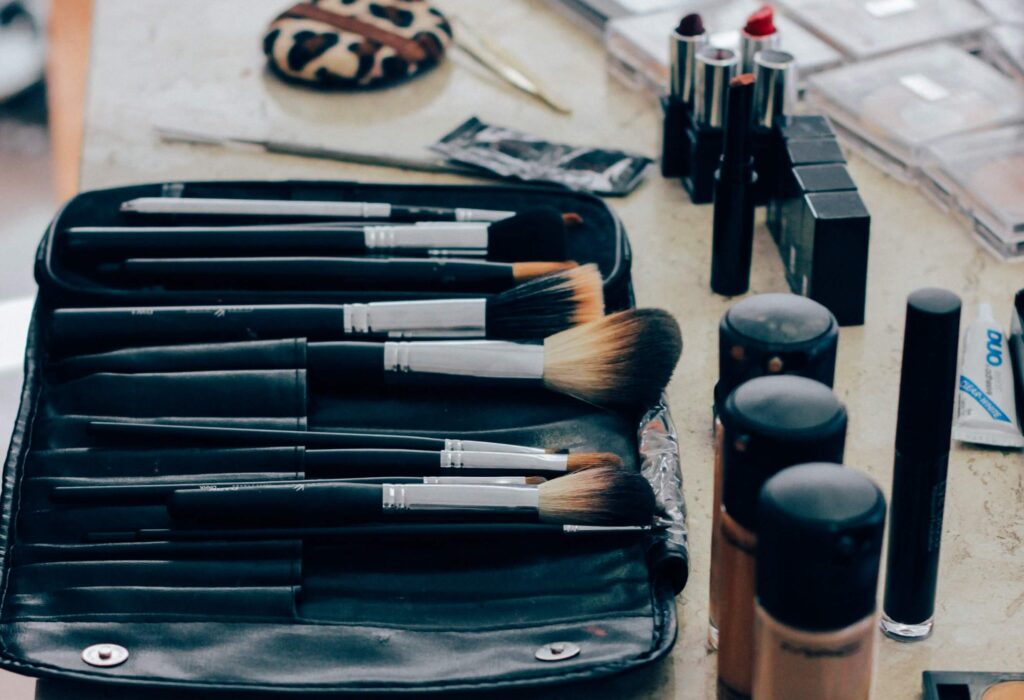
What to Use to Clean Makeup Brushes
How to Clean Makeup Brushes with Shampoo
Shampoo makes for the best solution for cleaning makeup brushes, especially if you’ve been wondering how to clean makeup brushes at home.
Since makeup brushes are made from different forms of hair, it makes a lot of sense that shampoo would be the best cleansing substance for the job. Even synthetic hair has to be cleaned eventually, so all makeup brushes are actually well suited to this method.
Shampoo makes for a quick makeup brush cleaner that doesn’t require much premeditation on the part of the cleaner. What’s great is that you can easily take advantage of this method whilst in the shower, which saves water if you were planning on standing over your sink every time your brushes need a clean.
Cleaning makeup brushes with shampoo works best using any products that are high in foaming ability. Brushes require repetition to come clean, so shampoos that foam are wonderful as they pull more from the bristles.
Shampoo is also the best makeup brush cleaner because it’s something most people already have in the house; meaning it’s not adding yet another expense to your already lengthy beauty product list. It’s convenient, and it’s likely already going everywhere that your brushes are, making it a great cleaning option for people who travel.
How to Clean Makeup Brushes with Vinegar
If you’re asking “what should I wash my makeup brushes with”, and also tend to opt for natural skincare whenever possible, you’re in luck. How to clean makeup brushes naturally requires one product, and one product only: vinegar.
Vinegar is a great do it yourself makeup brush cleaner because you’re guaranteed to have some laying around your kitchen pantry at most times.
To clean makeup brushes using vinegar, take a small bowl and mix one part vinegar with two parts lukewarm water. Swirl your brushes in the solution; you should see the build up of makeup saturating the liquid as it leaves the brush.
Rinse your brushes with fresh water after they have come clean to your personal satisfaction. If the smell of vinegar makes your skin crawl, simply rub the bristles up against a lemon until the zesty smell saturates it. This smell will also fade away naturally in a few days.
Vinegar is the best way to clean makeup brushes if you’re not partial to having the chemicals found in most shampoos on your skin. Some people experience irritation and have to avoid contact as much as possible.
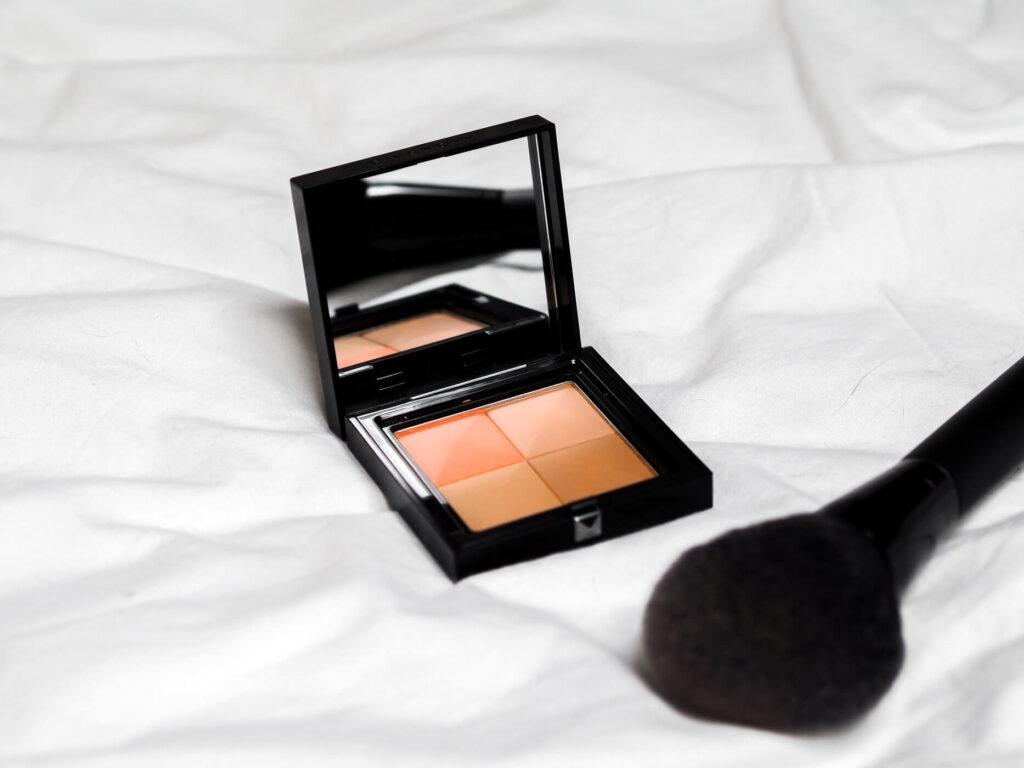
Any kind of vinegar can be used to clean a makeup brush, but we find apple cider vinegar works best!
How to Clean Makeup Brushes with Dawn
How do I clean my makeup brushes if I don’t want to use shampoo or vinegar? Dawn dish soap is here to save the day!
Disinfecting makeup brushes is as important as getting the physical dirt off of the bristles. Disinfection targets the bacteria, while regular soaps and vinegars can worry about the visible build ups.
We don’t recommend using Dawn dish soap on its own to wash makeup brushes. Though effective, the soap itself has the ability to dry out your bristles quite severely, causing breakage a lot faster than normal. Always mix your Dawn dish soap with equal parts olive oil, as this acts as a carrier in order to stretch the solution as well as make it less aggressive.
That being said, any household dish soap with relatively gentle properties is suitable for the purpose of cleaning makeup brushes. They’re another great solution to the question of what to clean makeup brushes with.
How to Clean a Makeup Brush without Cleaner
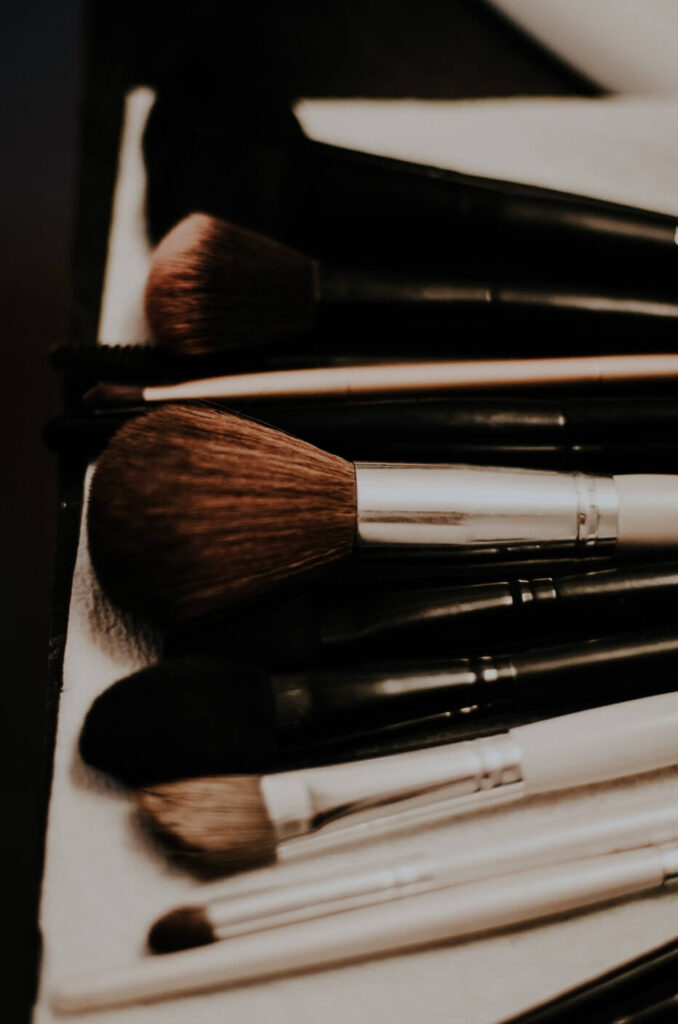
The question we’ve all been waiting for: how to clean makeup brush without formal cleaner.
Unfortunately, just using water on a dirty makeup brush won’t do anything but moisten the bristles and clump them together, before they dry in a sticky mess. There has to be some kind of additional lubrication and soapy presence in order to break down the build up and allow it to slide off of the bristles and down the drain.
For this reason, you always need some sort of cleaner when looking to DIY clean makeup brushes; sorry to rain on your parade!
If none of the above cleaner products have you convinced, we might also suggest using plain and simple olive oil as your substance of choice. One of the easiest ways to achieve a clean foundation brush is to simply massage a small amount of olive oil through the bristles, allowing the dirt to dislodge and be washed down using a gentle flow of water.
You could also use any old bar of soap that you have in the house. We love this one as you can just rub the head of the brush up against the soap whilst under water, creating simple movement of the dirt away from the bristles.
Makeup Brush Cleaner
You also have the option of purchasing a store-bought makeup brush cleaning solution, designed to rid bristles of bacteria and dirt-based build up.
Some argue that this is the best method as to how to clean and disinfect makeup brushes, but there are just as many who disagree. You see, makeup brush cleaner solutions that are sold by beauty brands tend to be nothing more than glorified shampoos and dish soaps.
They’ve figured that marketing the soaps off as “targeted makeup cleaning solutions” draws in buyers, especially those who feel inclined to take good care of their brushes in general. We tend to trust labels, so if a shelved item claims to clean brushes properly, why would anyone use smelly vinegar?
There is, in fact, more benefit in using a DIY makeup brush cleaner found around the house, especially substances like vinegar, lemon or olive oil. They are chemical free, meaning you’re reducing your contact with potentially harmful ingredients that could wreak havoc on sensitive skin.
They’re also better for the environment. A DIY makeup brush cleaner that isn’t separately manufactured and bottled eliminates the carbon footprint associated with this production process. Household products already exist and are in use by you, and there is no reason to bring yet another plastic wrapped contaminant into the world.
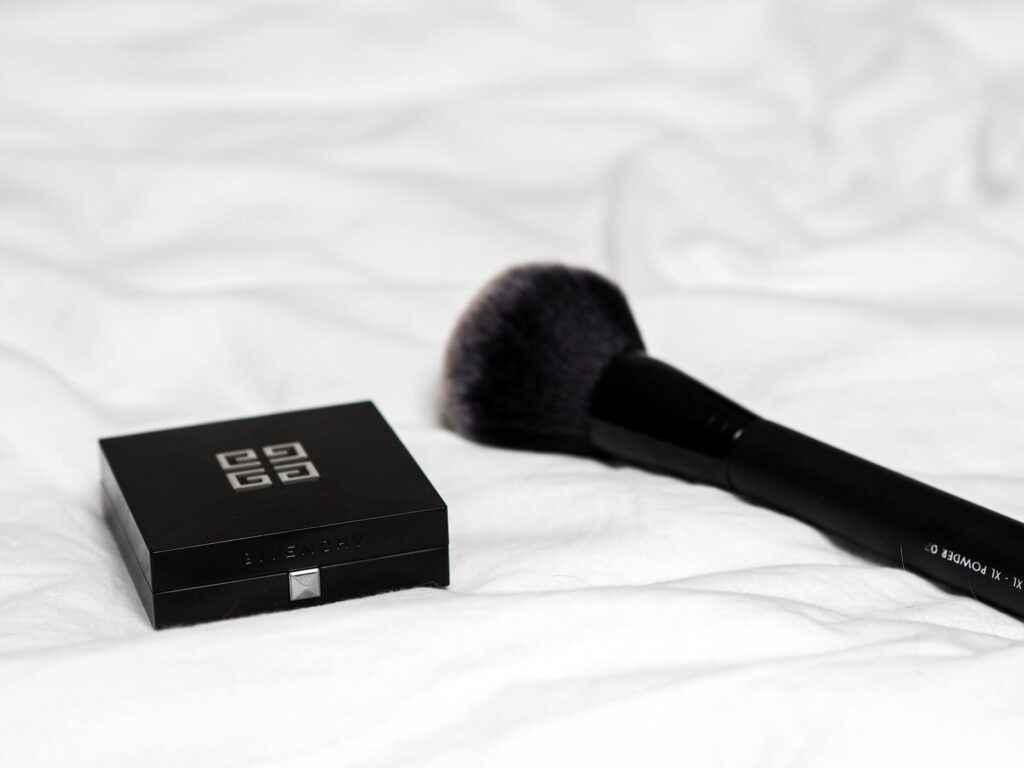
Makeup Brush Cleaner Machine
Finally, when all else fails, it might come time to invest in a more professional tool known as a makeup brush cleaning machine.
What are they? These are compact contraptions that have the ability to clean up to 12 makeup brushes at once. They are typically found in salons, but recently a number of brands have released more portable versions that fit seamlessly into a home/bathroom space.
Many ponder how to disinfect makeup brushes, and opt for cleaning machines as a superior choice. This is largely misleading, as the machines themselves don’t have any unique bacteria fighting abilities; it’s actually all in the product you pair it with.
The best makeup brush cleaner machines require the user to put their choice of cleaning solution in the base tank of the device. Usually, soap and water are sufficient, and will get the job done. For the purpose of disinfection, however, you’ll need to use a targeted disinfectant soap, or a significant amount of vinegar (vinegar has antibacterial properties).
Rubbing alcohol can also be added to your base solution to act as a disinfectant, but take note that this will greatly dry out your bristles and you will need to apply some sort of lubricating oil after the clean.
Makeup Brushes and Conditioner: All You Need to Know
To condition, or not to condition? That is the eternal question attached to one’s concern of how to clean makeup brushes properly.
Personally, we are pro conditioner. We think that since makeup brushes are made from hair, there is much benefit in treating them the same way you would the very hairs on your head.
Regular cleaning can dry out the hairs used to make your brush bristles. They thrive in the presence of natural oils, just like the hair on one’s scalp does, or on the body of plants or the animals from which they are taken.
The same way you apply a small drop of shampoo into the palm of your hand, simply apply some conditioner and repeat the circular massage process. Instead of rinsing the conditioner off right away, allow it three to five minutes to soak into the bristles and then rinse.
Place them to dry over the edge of a surface the same way you would usually do.
How Often to Wash Makeup Brushes
How often should you clean your makeup brushes? Sit tight, we’re about to get technical.
As an industry standard, it is generally acceptable to wash your makeup brushes once a week. This applies to any brushes for personal use that come into contact with your skin, and your skin only.
How often should you wash your makeup brushes also depends very much on the nature of their usage. If you’re a makeup artist, or aspiring to be one, you’re going to need to adopt some sort of cleaning routine that ensures all of your brushes are properly disinfected after use on a client.
It’s considered very unprofessional to leave your brushes unwashed between jobs. It also puts your clientele at risk of bacterial infection. If a client encounters a breakout after having their makeup done by you, you’re going to lose that client.
What also affects how often you should wash makeup brushes is how frequently you use them if they are your personal items. If you have an eye shadow brush, for example, but you only wear eyeshadow once or twice a month, you don’t really need to be washing it weekly.
Foundation brushes, eyebrow brushes and lipstick brushes tend to get a lot more use and thus require more regular cleaning.
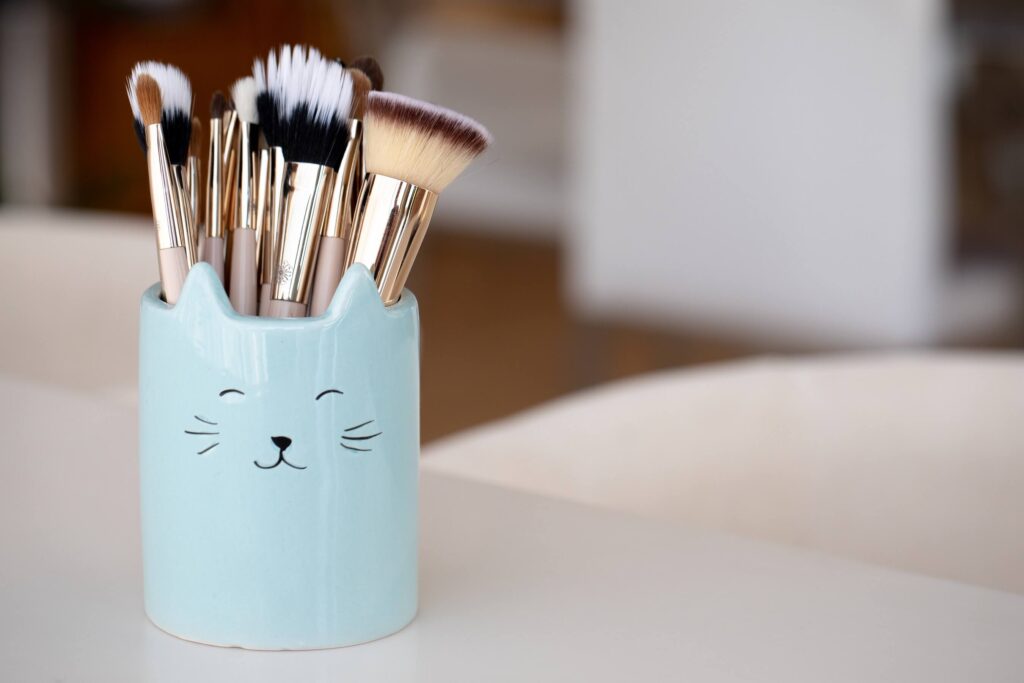
How to Dry Makeup Brushes Fast
We touched on how to properly dry your makeup brushes. A flat surface with an edge works best, so that the bristles are never physically touching a surface and more air can pass through them.
Always place a newly folded towel beneath your brushes to help absorb any water from the handles. Wooden brushes tend to warp over time when coming into too frequent contact with water; a towel will reduce their exposure to this moisture.
Sometimes you don’t have time to wait overnight for your makeup brushes to dry; we understand those SOS situations all too well. We also know that using a damp makeup brush almost always does more harm than good, leading to clumpy, uneven distribution (particularly of powdered products).
If you find yourself in a predicament whereby you need your brushes dry now, there are a number of things you can try:
- Shake out as much excess water as you can. Shake, shake, shake until the water that usually gets lodged deep within the head of the brush is released, and all that is left is for the bristles themselves to dry off.
- Use a towel to physically grip and dry off the bristles. Rotate to different areas of the towel that are not saturated with water.
- Blow on your brushes on low or no heat! This can shorten drying time quite significantly.
- Put your wet makeup brush out in the sun to dry off faster. Just don’t leave it outside for too long, as the UV rays can weaken the follicles and increase breakage.
It’s time for us to elaborate on that cardinal rule that we touched on earlier: never, ever blow dry your makeup brushes!
Because many of these brushes are made from actual hair, split ends are a real thing. Blow-drying is the quickest route to split ends, and anyone with long enough hair will tell you so!
If the bristles in your makeup brush begin to split, it won’t be of much use to you anymore. Thickness of bristles is very important when it comes to a makeup brush’s ability to do its job.
If you find yourself regularly in situations where rapid drying is needed, it may be best to use a beauty blender sponge instead of a makeup brush. They dry a lot faster, just like regular sponges are designed to do.
How to Clean Foundation Brush
Foundation brushes hold the most dirt and bacterial build up, simply due to the amount of surface area they are expected to cover and the density of the product that they distribute.
Foundation’s most natural role is to spread, so rest assured that it will find its way into the deepest crevices of your makeup brush, ready to take up refuge until you take the time to force it back out into the light of day.
A foundation brush, we’ve found, is best cleaned using a highly foaming shampoo solution. In this way, the user is able to continue to circle the brush through the foam until there is no longer a stream of skin colored mess coming off of the bristles.
Foundation brushes tend to lose their shape quite easily, so always take the time to reshape the bristles before laying them down to dry. We also recommend conditioning these brushes, as the repeated exposure to foundation chemicals causes them to roughen over time.
How to Clean Eyeshadow Brushes

Eye shadow brushes have more variety when it comes to the best ways of cleaning them. Most eyeshadows are powder based, meaning they don’t necessarily contain any oils or moisture that results in them clinging to bristles for dear life.
These powders are naturally loose and easy to get off, even without the help of a cleaner. First, take the time to tap any excess eyeshadow off of your brushes, by gently knocking them against a hard surface, or even your wrist.
Next, we’d recommend using any dish soap you have in the house to clean off the remaining powder build up. Dish soap is designed to lift anything with a tendency to stick, so even the tiny eyeshadow particles will be lubricated enough to fall away. This is particularly necessary if any of your eyeshadows contain glitter, as these flakes generally don’t want to dislodge.
Eyeshadow brushes don’t need as regular cleaning as foundation brushes. One can generally get away with just cleaning them off every two weeks or so. Some people actually enjoy a bit of product build up, as it gives unique tones when dressing their eyelids.
The eyelids are also not high bacterial zones, meaning that they are both low risk for both infection and bacterial spread.
How to Clean Makeup Sponges and Beauty Blenders
Makeup sponges work in place of brushes, and need just as regular a cleaning (if not more).
As sponges go, a lot of product will slowly be absorbed into the very porous sponge body. Because it’s not visible from the outside, it’s easy to overlook what is going on deep inside of the sponge.
Foundation will not release itself from the body of a beauty blender without the help of a potent soap and ample lubrication. Plain water actually works to pull the foundation residue deeper into the core of the sponge, as this is what sponges are designed to do.
The question of how to clean a beauty blender can be answered with the use of a combination of olive oil and soap. You can use hand soap, dish soap, or even a drop of shampoo. Mix equal parts of each product together and coat your beauty blender in the mixture.
Whilst standing over a sink, massage the solution into the sponge and watch the built up foundation fall away into the sink below. Keep at it until there is nothing more rinsing out of the sponge, and use water as needed.
Once clean, squeeze out as much of the remaining water as possible, and set the sponge onto a towel to dry off. Sponges dry a lot faster than regular makeup brushes, especially when left in the sun.
We acknowledge that beauty blenders often look a lot dirtier than they are. Their entire surface area becomes saturated with product, and gives the illusion of a lengthy, neglected build-up. Deep cleaning of a beauty blender takes time, and not everyone will have time to do it once a week. We recommend a weekly light clean, and a deep clean once a month.
Did You Enjoy This Article?
If you enjoyed this article, you might also like our articles discussing makeup such as Best 10 Organic and Natural Lipsticks, Mica in Makeup, 12 Best Organic, Non-Toxic, and Natural Mascara, Top 15 Zero Waste Makeup and Sustainable Packaging Brands, and Skincare Fridges.

